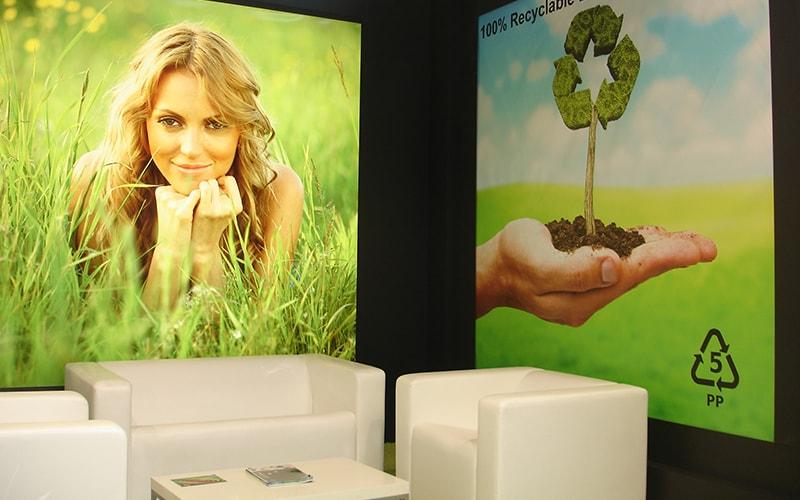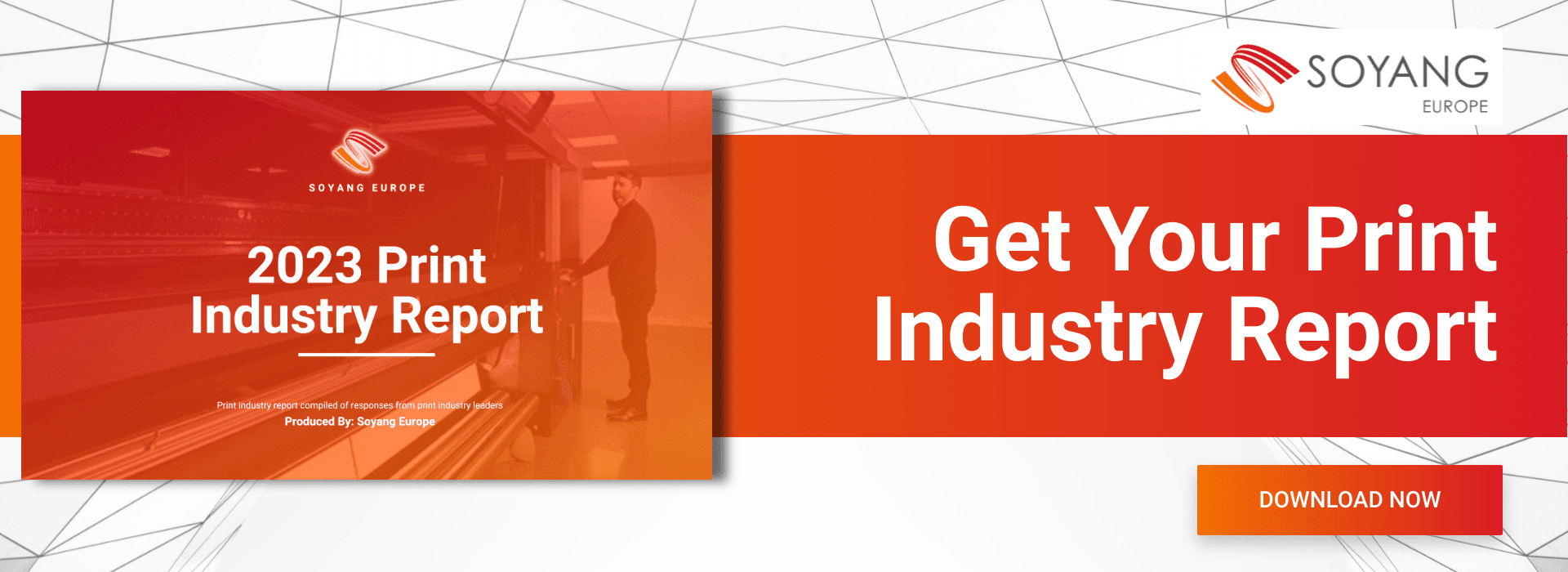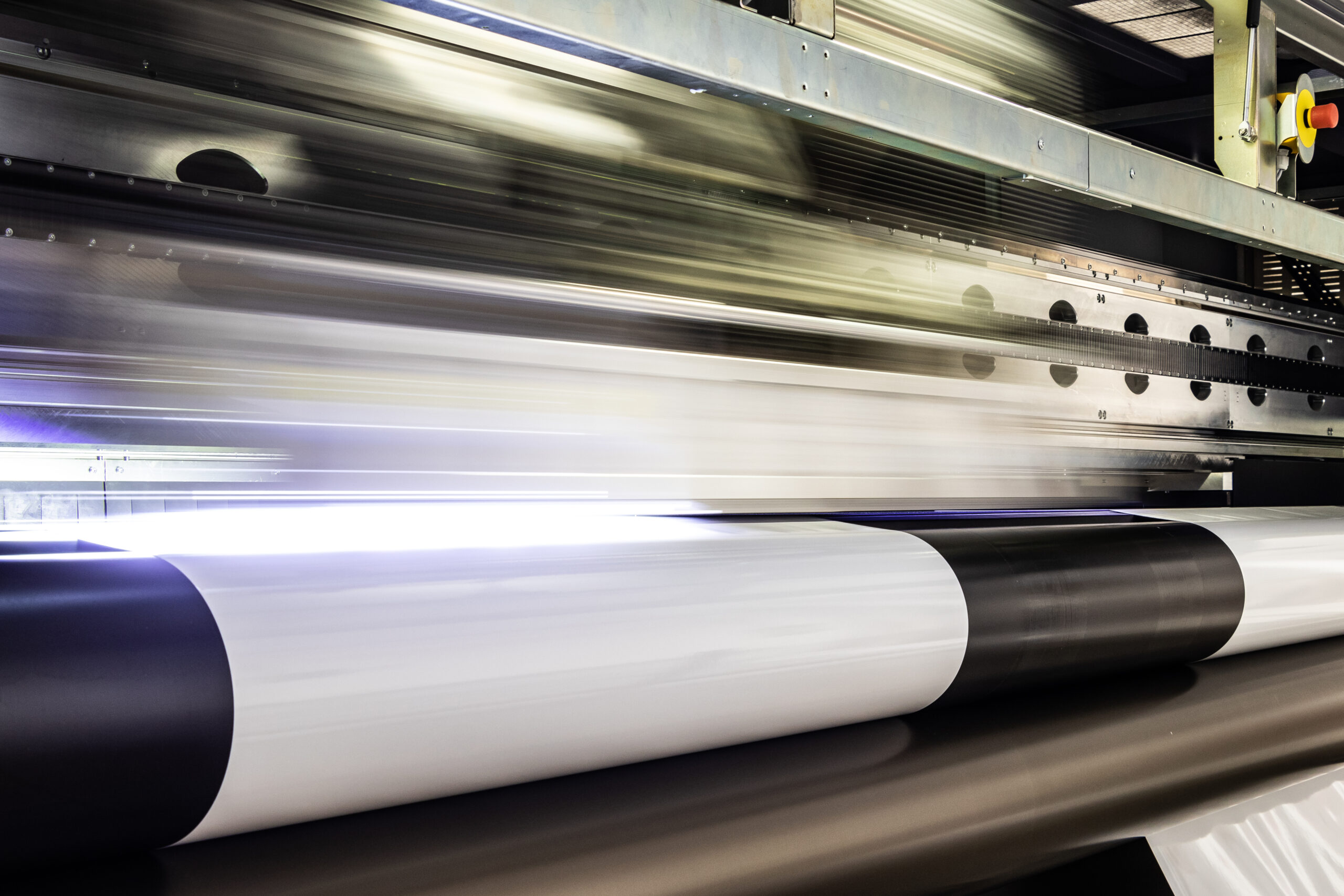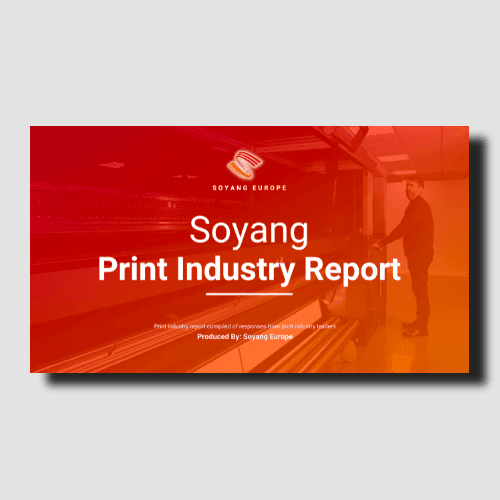Sustainability in printing is increasing in importance for customers, as Soyang’s 2023 Print Industry Report clearly shows. So how can you do what your customers expect and improve the printing sustainability of your business?
You don’t need us to tell you sustainability is a big deal. It’s part and parcel of virtually every aspect of life, and it’s almost certainly a growing factor in your print business.
According to our latest Print Industry Report, all customers are now asking for sustainability in printing at least part of the time. A small percentage of customers (7%) are asking for nothing but print sustainability.
Printing sustainability: how the industry is responding
According to our survey, most print businesses (51%) are working on becoming carbon neutral. A fifth (21%) told us they would be carbon neutral within the next five years. Already, 28% have implemented recycling programmes and switched to more sustainable print materials. 14% are using more eco-friendly inks and toners and have invested in energy efficient equipment. 14% of print businesses now offer only sustainable products.
While 35% of print businesses don’t intend to be carbon neutral, that’s not to say they’re shunning sustainability – simply that their efforts will stop short of complete carbon neutrality.
Everyone, it seems, is taking small steps or big strides towards printing sustainability. So how can you do the same?
Here’s how to improve print sustainability in your print shop
1. Think ink
It would be plain wrong to claim that eco-solvent inks are joyously planet-friendly when their non-eco-solvent equivalents aren’t. It’s more the case that eco solvents are a big step in the right direction through being milder and biodegradable. They don’t smell as strongly either, which is a bonus.
Find out more about choosing the right inks for your print shop
2. Choose UV Printing
UV inks are perhaps the most eco-friendly of all and, although they need curing under a UV light, that’s a considerably more energy efficient process than using heat.
3. Choose energy efficient printers
As a general rule of thumb, virtually any large format printer you buy today will be more energy efficient than a model you bought five years ago.
Some are far more efficient. But the picture is muddied by the wide range of operating modes available because a machine’s eco mode (which is inevitably what will be used for marketing purposes) may not be the mode that’s most appropriate to complete a print job.
For an objective measure of printing sustainability, therefore, look for printers that conform to ISO 20690 (for multi-mode printers working long print runs) or which have achieved Energy Star certification from the US Environment Protection Agency or similar industry ratings.
4. Review your printers
A print business needs printers, but does yours need all its printers? Reducing the number of printers in your print shop not only frees up floor space; it also cuts energy costs and may reduce the need to store multiple ink types.
The time to reduce is when you’re looking at replacing a printer. Rather than a single function device which may be rarely used, consider how a multi-function model could help you replace more than one printer, ensuring you achieve sustainability in printing by using fewer machines more often.
To double down on the print sustainability, you can then resell the redundant printer to ensure its reuse, or…
5. Recycle your old printer
Ensure that, when you replace on old printer, your supplier will take it away and recycle it in accordance with Waste Electrical and Electronic Equipment Directive (WEEE) principles.
6. Generate your own electricity
Print sustainability isn’t just about the materials and printer you use, but the energy you use to power the printer.
In the UK, solar is generally the cheapest, simplest and most effective renewable technology to incorporate into your print SME, but you may also find wind and hydro are viable alternatives depending on your location and the grants, subsidies and clean energy deals available.
In addition to the carbon saving, you’ll also protect your business from the effect of crazy energy prices.
7. Source clean energy
Chances are, even when your roof is filled with solar panels, you’ll still need to buy energy from the grid. Choose a deal that only uses energy from environmentally friendly sources.
8. Go paperless
If your stockroom shelves are groaning with papers and vinyls, you might laugh at the idea of going paperless, but we don’t mean paperless in terms of the products you produce; we mean paperless in terms of how you operate.
If you’re still printing your own business cards, comp slips and invoices, and if every member of the team uses post-it notes and notepads, remove them all, switch to digital, and achieve greater sustainability in printing.
Explore more than print sustainability stats
Soyang’s 2023 UK Print Industry Report covers a broad range of topics, from how print businesses are building client relationships and growing their businesses, to how they are using marketing, to how they’re reducing costs to increase margins.










